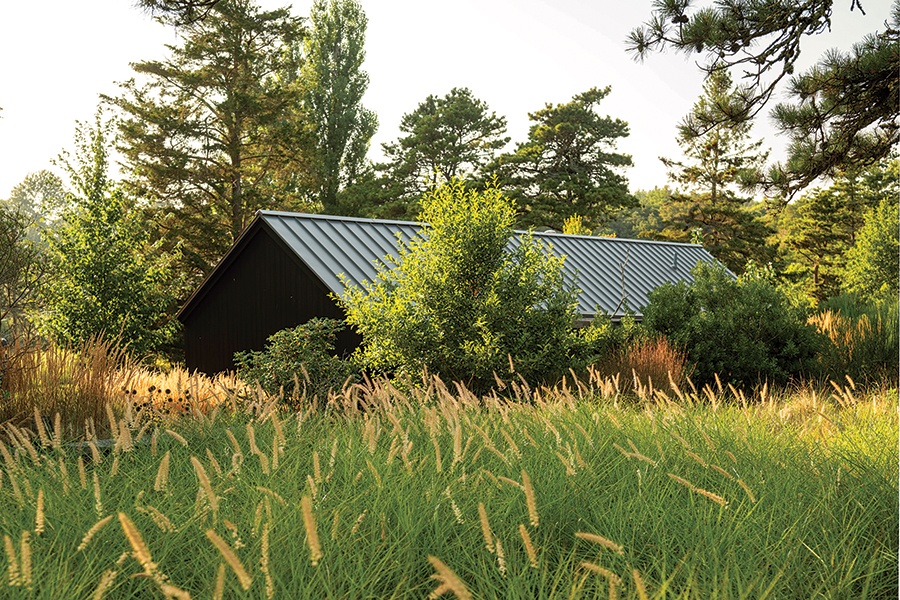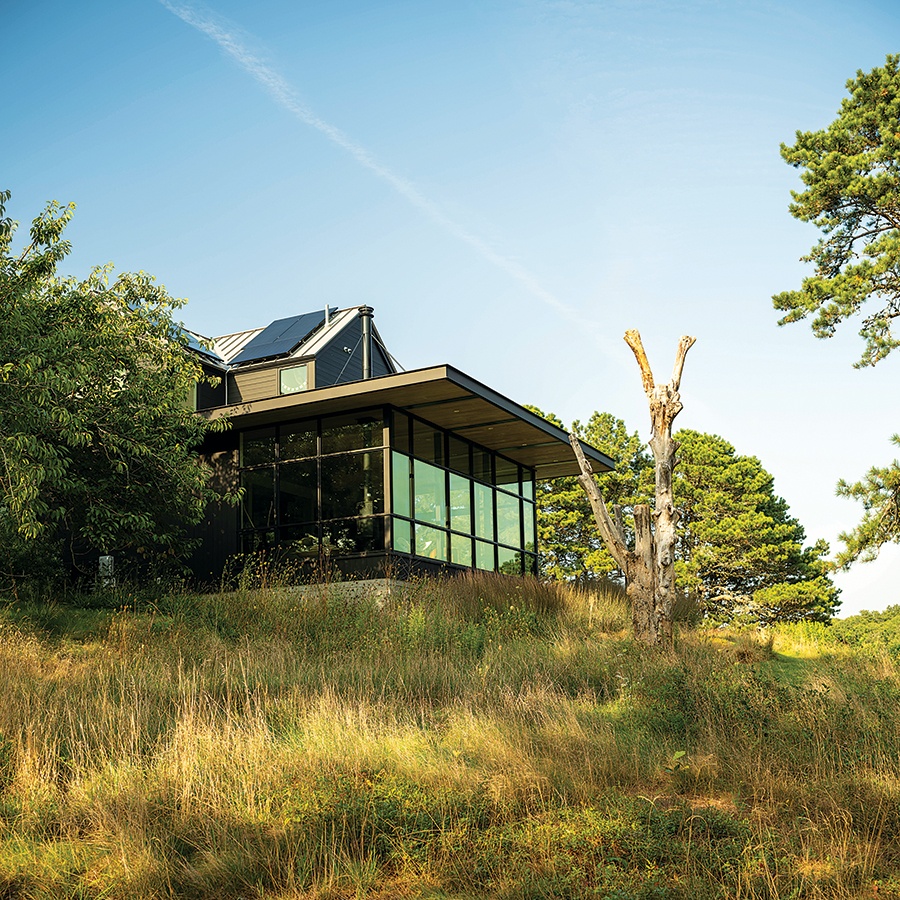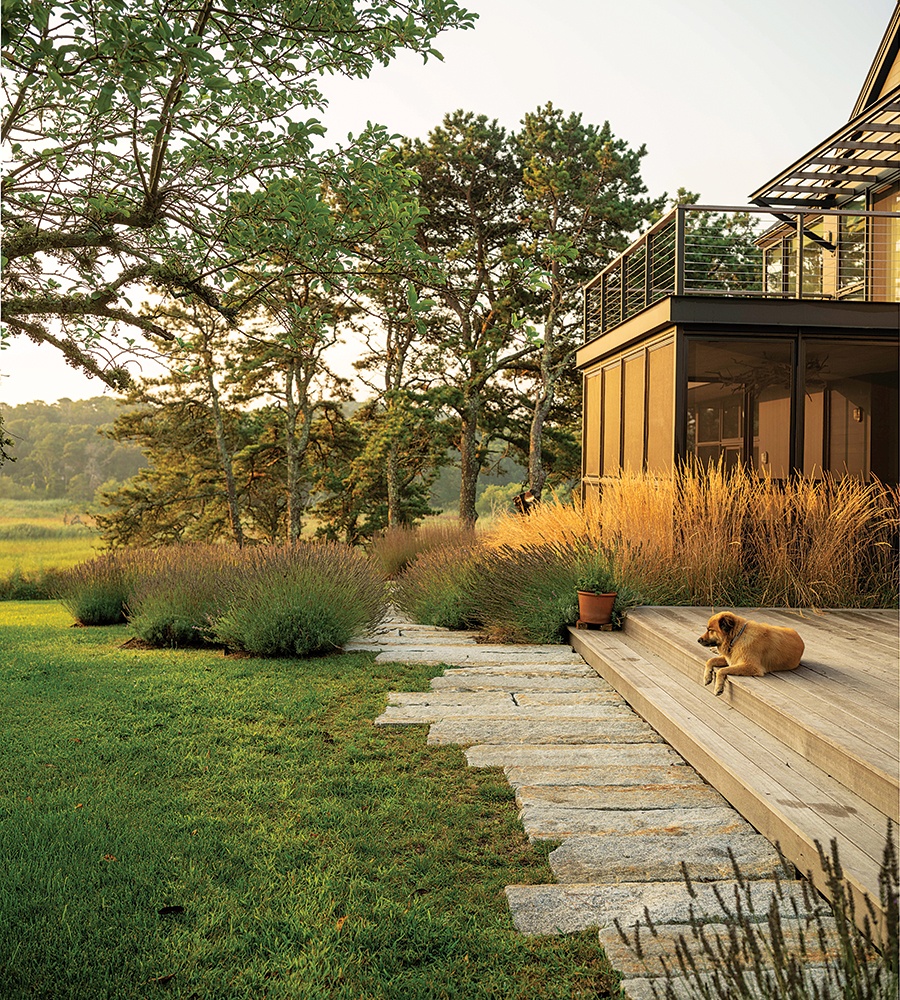Restoring the Rustic Charm of a Truro Family Home
A Cape Cod riverside landscape is revived to enhance its free-flowing origins and keep sustainability top of mind.

Photo by Neil Landino / Photo by Neil Landino
This article is from the fall 2024 issue of Boston Home. Sign up here to receive a subscription.
The winding banks of the Pamet River, in the Cape Cod hamlet of Truro, are a central gathering spot for a local family. Multiple generations have made decades of memories at home here while exploring nearby beaches, collecting driftwood, beach stones, and the ephemera of summer on the Cape.
But time had dated their simple homestead and landscape, so they completed a renovation that added a garage, guest suite/studio, and two annexes to the existing century-old Cape Cod–style abode. The family wanted their beloved environs to be the same as before so they could still feel at home here, overlooking the river marsh among their familiar pitch-pine forest and grassy fields, but more synchronized with their modern needs.

Grasses, Nyssa trees, and bayberry bushes surround the new guesthouse, which secludes itself by nestling into the natural topography. / Photo by Neil Landino
“The real directive on the landscape was to put everything back the way it was—this very rugged, natural, native landscape that they had cultivated over the years,” says John Haven, senior associate at Boston-based LeBlanc Jones Landscape Architects. “They wanted to make it look like it did, but better, so nothing should be overly designed.”
Keeping minimalism and the natural environment in mind, the design maximized existing materials and local plants. The team excavated a former brick terrace that surrounded the home, cleaned each brick, and then returned it as part of a new patio and paths. Reclaimed New Hampshire granite curbing adds texture and an inviting touchstone to stroll the backyard.
Indigenous grasses, including little bluestem and tufted hairgrass, pop up along the perimeter and in fields like a sea of billowing waves, while bayberry shrubs add a semi-evergreen color. Lavender that was removed during construction was replaced throughout the property, Haven says, and existing wildflowers were supplemented in the meadow to enhance visual appeal and attract pollinators.

“We planted and seeded the first 15–20 feet away from the house to blend into the existing native meadow,” says LeBlanc Jones Landscape Architects senior associate John Haven. “It rolls up to the new glass-and-steel-enclosed family room that overlooks the Pamet River.” / Photo by Neil Landino

Lavender, grasses, and a cove of existing pine trees provide a gentle buffer surrounding the new screen porch and wooden patio. / Photo by Neil Landino
dThe owner’s beloved collection of beach stones, gathered and curated over many years on the Cape, borders the reclaimed granite stone pathway / Photo by Neil LandinoTo minimize environmental impact, previously cultivated grass now remains wild, and only a small portion of mown lawn remains as an effort to reduce ongoing maintenance and watering. The family’s memorabilia even made its way back home—beach stones provide water drainage alongside the house, and driftwood lines the parking area.
“We introduced a grove of native Nyssa trees and plants such as bayberry that kept that rugged quality. The way it’s designed makes the perennials and flowers a hyperfocus at the house, and then it bleeds out into the shrub layer of the existing landscape,” Haven says. “Our palette was fairly small, in that we didn’t have a lot of flowering shrubs, and I’d say the grass in the meadow layer became the primary focus there.”

Tree preservation was of the utmost importance, Haven says, and here, native pine trees mix with new grasses to shelter the platform deck with a steel-and-glass family room addition by Hammer Architects. / Photo by Neil Landino
The biggest change was the new driveway, which transformed from a flagpole-straight asphalt entry to a serpentine path of gravel and grass strip that mirrored the river’s turns to create a gentler, more private approach to the 16-acre property. It all culminates in a refreshed outdoor space that feels at once familiar but new, separate but connected to each other, and different in each space but consistent in its strategically sustainable vision.
Having won an award for design from the Boston Society of Landscape Architects, the setting now raises the bar higher for what sustainable landscape could—and should—be.
“It was the anti-manicured landscape. It was about having this really rugged appearance that tied back to the setting of being there on the river,” Haven says. “It’s as though the landscape had rolled right up and engulfed the home and just continued on through the meadow.”
Architect Hammer Architects
Builder Cape Associates
Landscape Architect LeBlanc Jones Landscape Architects
Landscape Contractor CMEthier Associates, Inc.
First published in the print edition of Boston Home’s Fall 2024 issue, with the headline “Back to Nature.”


